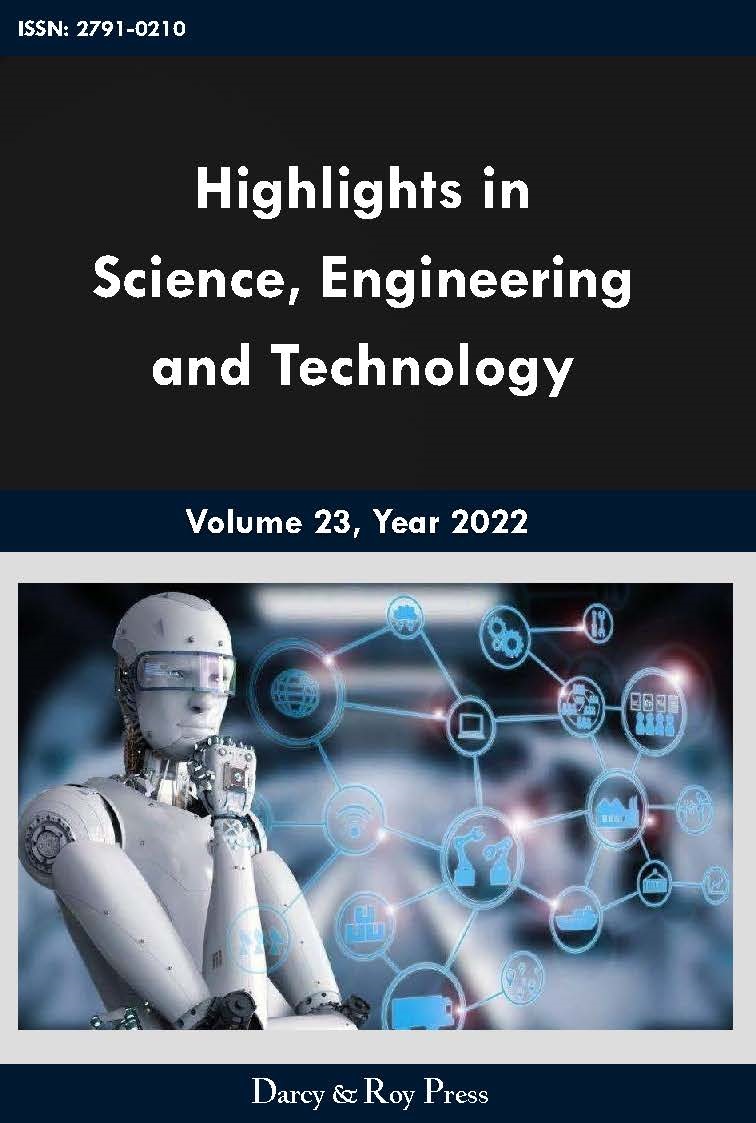Computer Aided Intelligent Control of Inlet Air Cooling System in Combined Cycle Power Plant
DOI:
https://doi.org/10.54097/hset.v23i.3275Keywords:
component, combined cycle, thermal efficiency, inlet air cooling.Abstract
In hot climate, the overall efficiency of combined cycle power plant (CCPP) decreases dramatically owing to the rise of environment temperature, which decreases the mass air flow to the compressor. Therefore, the gross power and thermal efficiency drop. Worldwide practice uncovers that gas turbines generate up to 20% less power in summer than in winter. A brief introduction of the CCPP and analysis of influence of ambient temperature are provided in this work. Furthermore, this essay gives a outline of the combined cycle based on several inlet air cooling technologies and why they are necessary. Since 1987, more and more inlet air cooling systems have been devised, each of which has its own advantages and limitations. They are mainly divided into 2 classes. Low cost and ease of operation are the main advantages of evaporation systems. However, they are strictly restricted by the wet-bulb temperature. In terms of the mechanical systems, which are not limited to it, command high initial and operating cost. The absorption chiller utilizes the waste heat of exhaust gases, which means they have great potential. In the end, economic criteria and problems to be solved are mentioned.
Downloads
References
Breeze, P. (2016) Combined cycle power plants. In Gas-Turbine Power Generation., 1: 65 – 75.
Ibrahim, T. K., Rahman, M.M. (2013) Study on effective parameter of the triple-pressure reheat combined cycle performance. Therm. Sci., 17: 497 – 508.
Ibrahim, T., Rahman, M. M. (2013) Study on effective parameter of the triple-pressure reheat combined cycle performance. Thermal Science., 17: 497 – 508.
Van der Geer, J., Hanraads, J.A.J., Lupton, R. A. (2010) The art of writing a scientific article. J. Sci. Commun., 163: 51 – 59.
Eshoul, N.M., Abualgasem, F., Alkateb, M., Lamidi, R.O. (2020) Performance enhancement of a combined cycle power plant using absorption chiller. 2020 11th International Renewable Energy Congress (IREC). https://doi.org/10.1109/irec48820.2020.9310430.
Alhazmy, M. M., Jassim, R.K., Zaki, G.M. (2006) Performance enhancement of gas turbines by inlet air-cooling in hot and humid climates. International Journal of Energy Research., 30: 777 – 797.
Mohapatra, A. K., Sanjay. (2014) Thermodynamic assessment of impact of inlet air cooling techniques on gas turbine and combined cycle performance. Energy., 68: 191 – 203.
Deng, C., Al-Sammarraie, A. T., Ibrahim, T. K., Kosari, E., Basrawi, F., Ismail, F. B., Abdalla, A. N. (2020) Air cooling techniques and corresponding impacts on combined cycle power plant (CCPP) performance: A review. International Journal of Refrigeration., 120: 161 – 177.
Chaker, M., Meher-Homji, C. B. (2013) Evaporative cooling of gas turbine engines. J. Eng. Gas Turbines Power., 135: 081901.
Chaker, M., Meher-Homji, C.B. (2006) Inlet fogging of gas turbine engines: climatic analysis of gas turbine evaporative cooling potential of international locations. J. Eng. Gas Turbines Power., 128: 815 – 825.
Lecheler, S., Hoffmann, J. (2003) The Power of Water in Gas Turbines: ALSTOM’S Experience with Air Inlet Cooling. Proc. of PowerGen Latin America, Sao Paulo, PennWell, Tulsa, OK.
Ameri, M., Hejazi, S. H. (2004) The study of capacity enhancement of the Chabahar gas turbine installation using an absorption chiller. Appl. Therm. Eng., 24: 59 – 68.
Behafarid, F., Bahadori, M.N. (2006) Performance evaluation of a gas turbine operating noncontinuously with its inlet air cooled through an aquifer thermal energy storage. J. Energy Resour. Technol., 129: 117 – 124.
Shirazi, A., Najafi, B., Aminyavari, M., Rinaldi, F., Taylor, R.A. (2014) Thermal–economic–environmental analysis and multi-objective optimization of an ice thermal energy storage system for gas turbine cycle inlet air cooling. Energy., 69: 212 – 226.
Kakaras, E., Doukelis, A., Prelipceanu, A., Karellas, S. (2005) Inlet air cooling methods for gas Turbine based power plants. Journal of Engineering for Gas Turbines and Power., 128: 312 – 317.
Zhang, T., Fu, Z.G., Liu, Z.T., Yan, Z.Y., Zhu, H.F., Zhang, T.Q. (2020) Effect of inlet temperature on performance of gas-steam combined cycle unit. Progress in Chemical Engineering., 39: 4367 - 4374.
Yilmazoğlu, M. Z. (2010) Effects of a fogging system on a combined cycle performance. Proceedings of the Institution of Mechanical Engineers, Part A: Journal of Power and Energy., 224: 1029 – 1038.
Shen, H. Q. (2006) Development and application of refrigerant. Decision-making management., 21: 52 - 53.
Jones, C., Jacobs, J. (2021). Economic and Technical Considerations for Combined-Cycle Perfor-mance-Enhancement Options. https://www.ge.com/content/dam/gepower-new/global/en_US/downloads/gas-new-site/resources/reference/ger-4200-eco-tech-considerations-for-cc-performance-enhancement.pdf.
Lv, T., Sun, Y., Sun, X.R. (2004) Analysis on the development status and prospect of gas turbine inlet cooling technology. Gas turbine technology., 4:18 - 22.
Wang, S. L., Zhang, L.N., Zhang, X.L. (2009) Current Situation and Development Trend of Gas Turbine Intake Cooling Technology. Electric Power Science and Engineering., 25: 37 - 41.
Mohanty, B., Jr, G. P. (1995) Enhangcing Gas Turbine Perform- ance by Intake Air Cooling Using an Absorption Chiller. Heat Recovery Systems & CHP., 15: 41 - 50.
Downloads
Published
Issue
Section
License

This work is licensed under a Creative Commons Attribution-NonCommercial 4.0 International License.


















